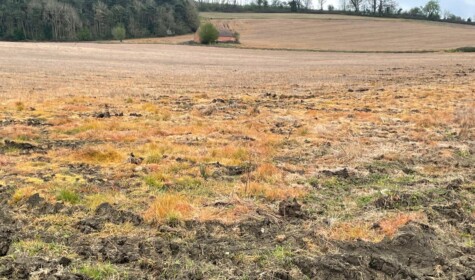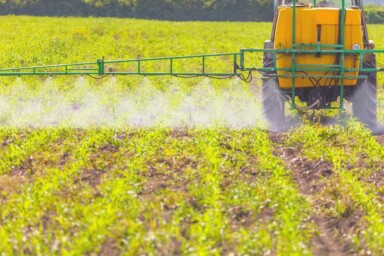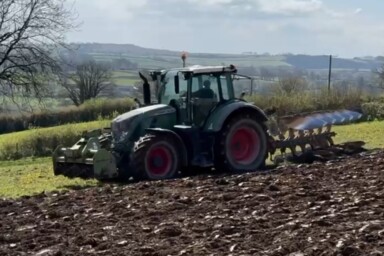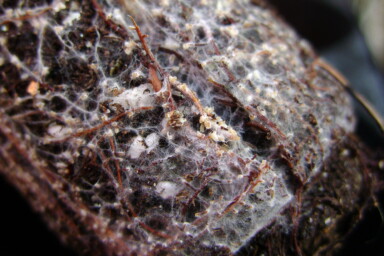One of the key questions for farmers today is whether to continue using a plough. Land has been ploughed to grow crops for thousands of years. Arguably, urban societies and civilisation itself, owe their existence to the plough. But ploughing can damage soil structure and biological life. Soil erosion, phosphate pollution and CO2 emissions from ploughed fields on conventional farms are also higher than those from comparable fields under no-till and marginally higher than those under min-till.
As part of its Sustainable Farming Incentive, Defra is effectively paying farmers to abandon ploughing and embrace either no-till or min-till methods instead. But is this really informed by the latest science and in our best interests, especially when it depends on the herbicide, glyphosate, about which multiple concerns have been raised? Richard Young looks at the evidence on both sides of the argument.
In recent years, there has been an upsurge of interest in regenerative agriculture. In many respects, this is extremely welcome. Despite five very different forms of regenerative farming being identified and the lack of agreed definitions or independent monitoring, regenerative crop farmers tend to adopt longer and more diverse rotations and include cover and green manure crops. While many still use agrochemicals, they think like ecologists as well as food producers and are avoiding some of the worst aspects of continuous arable farming. Many of them are also recognising the value of re-introducing grass/clover breaks and grazing livestock into crop rotations to improve soil health and reduce nitrogen fertiliser use.
Over time, this should increase soil organic matter and make crops naturally stronger and better able to resist pests and diseases. Getting farmers to put grass and clover back into arable rotations has long been a central aim of the Sustainable Food Trust (SFT) and the Soil Association because it is a cornerstone of generating fertility on the farm and restoring the health of badly degraded soils.
What is less welcome is the fact that a high proportion of regenerative farms depend on the routine use of glyphosate. Like farms that grow arable crops year after year, most of them have switched from using ploughs to ‘no-till’ (the direct drilling of seeds), or ‘min-till’ (light soil cultivations prior to sowing). In both cases, with only rare exceptions, this cannot be done successfully without the use of glyphosate to control weeds.
The no-plough aspect, however, isn’t as clear cut as this makes it appear. Some no-till and min-till farmers still find it necessary to plough and/or sub-soil their fields every 3-4 years. One of the reasons for this is that soils on heavy land can become compacted, another is that persistent weeds, like blackgrass and couch, and pests like wireworms and nematodes, are difficult to control without ploughing. In addition, most vegetable crops cannot be grown without ploughing, so rotations which include potatoes or cabbages or onions, for example, still depend on ploughs almost as much as ever.
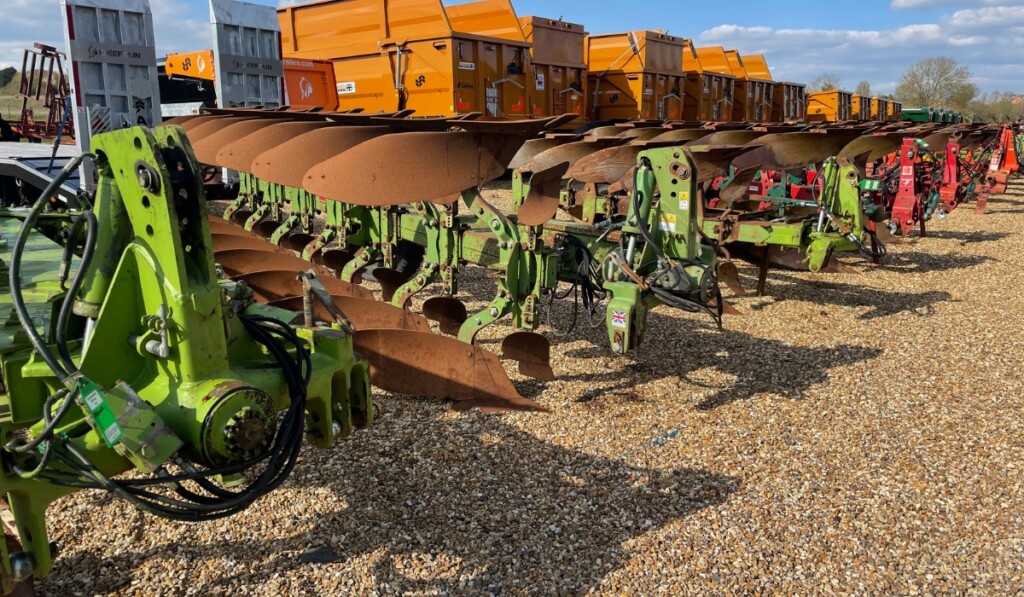
For most organic farmers who grow arable crops, there are few alternatives to using a plough within a sound rotation. But in a world of global warming and sustained population growth, the arguments are not all on the chemical-free side.
Is using glyphosate a deal with the Devil?
In Christopher Marlowe’s 16th century play, Dr Faustus, the eponymous protagonist, a highly educated man who has reached the limits of human knowledge at the time, still thirsts for more. Despite warnings, Faustus manages to conjure up the Devil, using the black magic arts he has studied. The Devil does a deal with him. For the next 24 years Faustus can have and experience anything he wants, but after that the Devil gets his soul in Hell for eternity, which, as Rowan Atkinson, playing the Devil welcoming new arrivals, tells us, in one of his comic sketches, ‘Is a heck of a long time’!
Interestingly, the three examples included in the play of what Faustus wants, are all things we have gained access to over the last 50-100 years: the ability to fly around the world, the provision of out-of-season fruit over winter and the opportunity to see images of beautiful women, all of which have environmental or societal downsides. Faustus asks to see Helen of Troy (from Greek mythology) whose enchanting face and the desire it created, started the Trojan wars and ‘launched a thousand ships’. But how does any of this relate to glyphosate?
Glyphosate
Glyphosate was developed by Monsanto and first used as an agricultural herbicide in 1974, marketed as ‘Roundup’. Apart from enabling the use of no-till methods, it has several additional advantages over other weedkillers:
- it kills the roots as well as the leaves, so weeds cannot regrow;
- it kills all green plants on which it is sprayed, so there is no need to identify the weeds;
- it greatly speeds up farming operations, reducing both labour and fuel costs;
- it is also permitted as a pre-harvest desiccant, which reduces drying costs in a wet season.
I didn’t hear about Roundup until 1978 and, by then, I had been farming organically for four years, so I have never used it. But if it had become available when I was still using fertilisers and pesticides, I would probably have tried it on one field. That might have saved me days of back-breaking work trying to get on top of a couch grass infestation in a 22-acre field. So, I can see the attraction. I would not have known then that, 54 years later, couch grass would still be a problem and an even bigger one for no-till farmers, than for those who use a plough, as Bayer Crop Science explains.
As the days, then hours, then seconds of Faustus’s 24 years move inexorably towards their end, Faustus repents his foolishness and struggles ever more pitifully to find some way to save his soul from everlasting damnation – but to no avail. In most stage productions, we see him being pulled down to the fires of Hell, shortly before the play ends.
The downsides of glyphosate
My analogy with Dr Faustus is, of course, subjective and open to criticism. But while the 24-years allotted to him may have no particular significance, it is an uncanny coincidence that in 1998, twenty-four years after Roundup was first put on the market in the US, the Journal of Pesticide Reform published a short article and 13-page factsheet by Caroline Cox. She was at the time the staff scientist at the NCAP (Northwestern Coalition for Alternatives to Pesticides) in the US, detailing evidence indicating a range of negative human health and environmental impacts from glyphosate and Roundup. Time has shown her concerns to be justified and they have been added to by many subsequent studies. A 2016 review by the Pesticide Action Network details many of these, though further evidence continues to emerge.
Of most significance on the human health side, is the conclusion in 2015 of the World Health Organisation’s International Agency for Research on Cancer that glyphosate is “probably carcinogenic”. Following intense lobbying by Monsanto, the Environmental Protection Agency in the US, however, reached a different conclusion. The strongest evidence, so far, of a cancer link to glyphosate relates to the large number of cases of non-Hodgkin lymphoma (blood cancer) in people who have had exposure to Roundup (4,000 in California alone), but links to other cancers have also been claimed.
In individual cases, US courts have awarded very large sums in damages of up to $2 billion on one occasion, though this was reduced to $86.7 million after an appeal by Bayer, which bought Monsanto in 2018 for $63 billion. However, while many associations between glyphosate and cancer have been claimed, and courts have often accepted these, the evidence is not considered strong enough to establish a cancer link beyond doubt. Ever-cautious scientists and a lymphoma action group point out that the perceived association could be a coincidence and other factors may be involved. But for those who feel convinced their exposure to glyphosate was a factor that helped to cause their cancer, one could say they are in a kind of hell already.
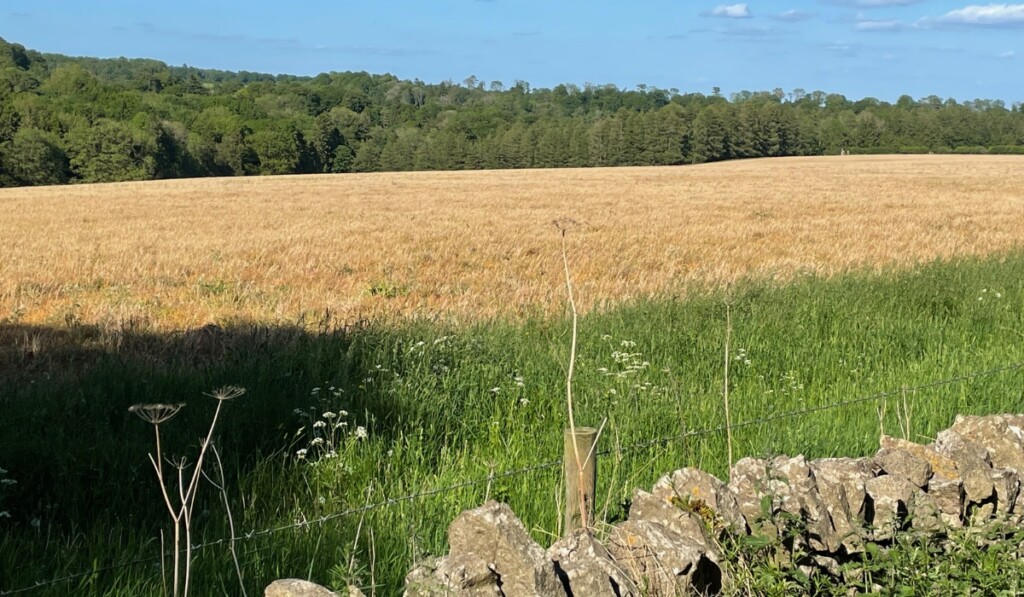
The numerous health and environmental downsides of glyphosate that have been identified in peer-reviewed studies are too many and varied to discuss in detail here. Some are likely to relate to indirect effects, such as reduction in food supply, rather than direct toxicity, but they include, established or suspected negative impacts on birds, aquatic life, amphibians, bees and other insects, earthworms, soil mycorrhiza, antibiotic resistance, and the, as yet, unknown impact of glyphosate on the oceans and sea creatures, where it is highly persistent. Many, though not all of these, describe the association they identify as relatively mild or in need of further research. But is a small effect over a long period of time from an agrochemical so widely used, not likely to have a significant impact?
Glyphosate’s biggest selling point today
Claims that using direct drilling – inevitably with glyphosate – will help in the fight against climate change by sequestering carbon are one of the chemical’s biggest selling points today with both policymakers and many environmentalists. One of the most influential studies was a 2002 review of evidence, which concluded that moving from ploughing to no-till methods would sequester over half a tonne (570 kg) of carbon per hectare annually (equivalent to over two tonnes of CO2). These findings were taken up by influential bodies: as examples, in 2007, the IPCC concluded that conservation tillage (a term that covers both no-till and min-till) “can increase the SOC [soil organic carbon] stock for 25-50 years”. In 2013, the United Nations Environment Program’s Emissions Gap Report (p24) included no-till as a practice that could help to reduce agricultural greenhouse gas emissions. Less controversially, there is clear evidence that no-till farmers can reduce their diesel use significantly in the years they neither plough nor sub-soil.
For whatever reason, those original claims have become stuck in the agricultural psyche, despite a vast body of research which has called their accuracy into question since.
Does no-till farming sequester carbon?
One of the first studies to challenge the no-till (NT) soil carbon sequestration claims came from US scientists in 2007. They recognised that conservation tillage increased carbon in the top of the topsoil, but added, “The widespread belief that conservation tillage also favors carbon sequestration may simply be an artifact of sampling methodology.” A 2008 study from Canada found similar results, noting that at a depth of 21-25 cm average soil carbon was, “significantly greater under FIT [full inversion tillage, i.e. standard ploughing] than under NT.”
A significant number of review studies by different teams of scientists have found broadly similar results. These include a 2010 study from Australian and Chinese scientists which determined that “adopting NT did not enhance soil total C down to 40 cm”. They also concluded that continuous crop production for five years resulted in an average carbon loss of more than 20 tonnes per hectare, with no significant difference between conventional tillage and no-till. After adopting no-till, soil carbon increased by 3.15 tonnes per hectare in the top 10 cm of soil but declined by 3.30 tonnes, 20-40 cm down.
Some individual studies, for example, this one in 2013, have continued to claim significant carbon benefits from no-till and smaller benefits from min-till, by testing only the top few inches of soil. However, all comprehensive reviews of the evidence have found no significant net sequestration. Typical of many, a 2014 study by soil scientists at Rothamsted Research in the UK, argues that the role of no-till in climate change mitigation, “is widely overstated”. The scientists concluded that such claims, “ignore a large body of experimental evidence showing that the quantity of additional carbon in soil under no-till is relatively small,” and that any gains in the topsoil only offset losses deeper down.
A systematic review in 2017 drew similar conclusions, while a 2016 global study found that although no-till can increase yields in dryland regions (when two other principles, crop residue retention and rotations, are also met) “yields decrease with no-till regardless of whether the other principles are applied in humid climates.” A Farmers Weekly article in 2019 acknowledged that no-till results in lower yields, but argued that due to the 22% lower production costs, “no-till farms can afford to produce 1t [tonne]/ha less wheat”. As detailed on the valuable soil management blog site of organic farming advisor, Mark Measures, an even more recent UK study from 2021 has concluded that, “Overall, there is limited benefit in using shallow minimum tillage and zero tillage practices in the UK to increase soil carbon storage.”
It is hardly surprising then that the Emissions Gap 2022 report no longer makes claims about no-till and carbon sequestration, pointing instead to the greater use of legumes to reduce the use of nitrogen fertiliser, and better rice, manure and nutrient management as ways to reduce emissions. It also notes that the move to precision farming in the US has so far not reduced nitrogen fertiliser use. It sees the global increase in organic farming to almost 75 million hectares as positive. Despite all this, however, the myth persists in many circles, that giving up ploughing and embracing no-till will help us reduce food-related emissions.
Glowing in the dark
Such false claims are not so unlike the things that lured Faustus into his pact with the Devil. But, as a near contemporary of Marlowe wrote, “Glories, like glow worms, afar off shine bright. But looked into near, have neither heat nor light.”
Making things simpler
Controlling weeds with glyphosate has, however, made life simpler for farmers and enabled farms to get much larger. This has benefitted those that were already large, at the expense of the great number of smaller farmers who have been elbowed out, and the even larger number of people who would love to have a patch of land on which to grow things or keep animals themselves.
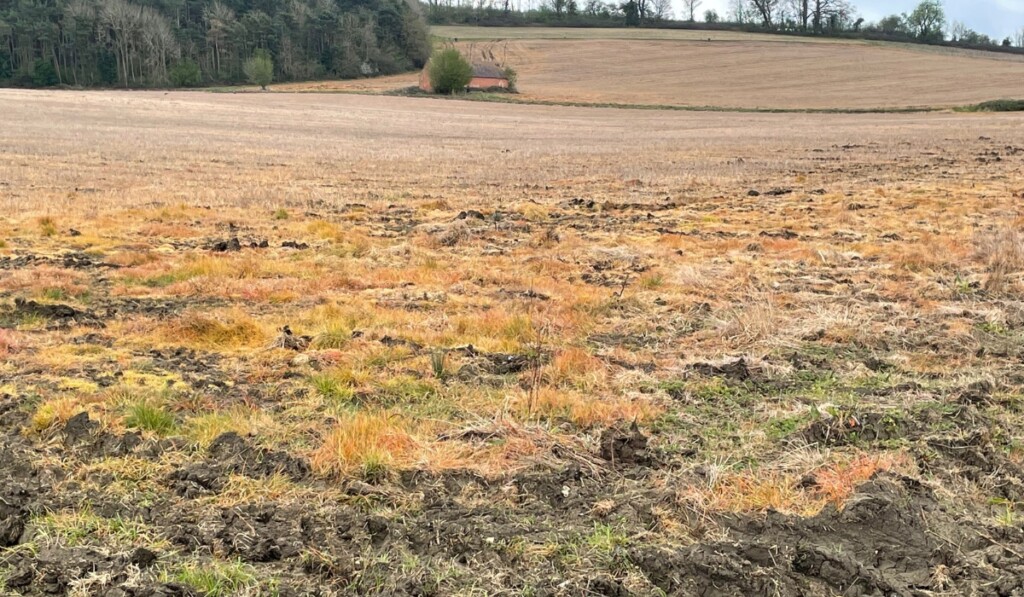
Well, at least that’s how it was until Monsanto introduced the first crops containing the glyphosate resistance gene (Roundup Ready). As this 2021 study shows, this spread to a few weeds, and now at least 48 weeds in the US, South America and Australia are resistant to glyphosate and large amounts of more dangerous chemicals are being used to manage a problem caused by glyphosate. Explaining how this occurred, a US scientist behind the study says, “Just as humans have to think ‘outside the box’ when confronted with new challenges, weeds had to evolve ‘outside the box’ when confronted with glyphosate selection.” But if we accept that glyphosate and ploughing can both cause problems, where does a solution lie?
What we can learn from the past
In the opening line of his 1943 book, Plowman’s Folly (available online and also published in the UK as Ploughman’s Folly), Edward Faulkner states, “This book sets out to show that the moldboard plow which is in use on farms throughout the world, is the least satisfactory implement for the preparation of land for the production of crops.” His case, that it was better to keep crop residues on the surface, rather than bury them with a plough was neatly summarised in a 1944 short review in Nature. But while many of his arguments have stood the test of time, Faulkner was not a farmer. His book and even its sequel, A Second Look (later published in the UK as Ploughing in Prejudices), contain examples of significant exaggeration and a level of naivety not infrequently found amongst those who influence agricultural policy, but have never grappled with the vagaries of the weather and the multiple, practical obstacles faced by food producers.
As Jorian Jenks commented on one aspect of Faulkner’s case, in a review in the Winter 1947/8 edition of the Soil Association’s journal, Mother Earth (pp. 43-45), “The road to good husbandry is neither so short nor so straightforward as that.” In A Second Look, Faulkner does, nevertheless, row back somewhat from his original position and sets out a broader case. Amongst other clarifications, he states he is only opposed to deep ploughing, not all types of ploughing, and he recognises that his approach is not suitable for all soil types. He explains that his concern was with the worn-out soils on all-arable farms and not with farms where the soil is being maintained in good heart. He states, “While the book was intended to draw an indictment of the plow, the far more important purpose was to show the reader the need for highly developed biological activity in the soil.” No organic or regenerative farmer could disagree with that.
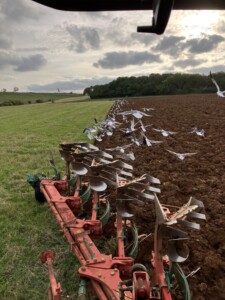
Although, most farmers and agriculturalists of the day were not won over by Faulkner’s arguments, at least some organic farmers in the UK and the US supported his case. In his 1951 book, Fertility Farming, early organic farming pioneer, Frank Newman Turner, who farmed in Somerset, stated “I can support every word of criticism which the American Edward Faulkner had for the plough.” Despite his tireless work, a close reading of the book suggests that he had only partial success in controlling weeds without either ploughing or using herbicides.
In Philip Conford’s The Origins of the Organic Movement (pp. 108-110), Faulkner emerges as one of those who played a part in the development of organic farming philosophy and dissemination of key principles, even though he embraced some components of conventional agriculture. Faulkner is, however, silent on the issue of using herbicides to control weeds, even though the safety and wisdom of this was already concerning other organic farming advocates.
It seems possible that Faulkner’s success in controlling weeds without recourse to ploughing was not just due to the fact that his trials were carried out on light, free-draining soil, as he acknowledged, but perhaps also – here I only speculate – to the fact that weedkillers might have been used when needed? The selective weedkillers 2,4-D and MCPA both came onto the market during the 1940s.
What I deduce from all this is that progress doesn’t always run in a straight line. Faulkner has contributed something important – a better understanding of how to use the plough to best effect and minimise damage when possible. Like others, he also drew attention to the primary importance of maintaining good stocks of dark, stable organic matter in the soil, or humus as it has long been called by organic practitioners. Early estimates of soil carbon sequestration under no-till proved to be incorrect and simplistic. In a similar way, Faulkner’s ideas today need to be balanced with wider practical experience and information from other sources.
Finding a solution
The fundamental question is, can we grow good crops without either glyphosate or ploughing? As Mark Measures describes in To plough, or not to plough? (an article written to advise organic farmers), various approaches have been tried. A farmer on well-drained, easily worked soils in Wiltshire has been successful using a form of min-till, not so unlike Faulkner’s. But he is, nevertheless, cultivating the soil to a depth of 15-25 cm, i.e., up to 10 cm deeper than the shallow ploughing now advocated and used by most organic farmers. For me, this raises the question of whether this is better, worse or the same as shallow ploughing down to 15 cm?
The results of a long-term comparison of ploughing and reduced tillage on a biodynamic farm in Switzerland makes for interesting reading. There was a significant net increase in soil carbon in the top 10 cm of soil, as in the studies on conventional farms, no difference in the 10-20 cm band, but the phraseology ‘increased stratification’ in the 20 cm to 50 cm layer leaves me uncertain as to whether or not there was a net carbon gain with reduced tillage? Since substantial amounts of animal manure were applied during the trial (whereas no manure was applied in the other studies I have cited), one might expect differing results. There was, though, a very significant increase in weeds, with a suggestion that the increased cultivations needed to control this under biodynamic or organic husbandry, might cancel out any benefits under the no-plough system.
Other approaches using a machine developed in Germany called the EcoDyn or the crimper roller designed by the Rodale Institute in the US, have very limited uses, and both have shown variable results in the UK, most probably because they are less suited to the unpredictable weather patterns here. Additionally, a technique which allows wheat to be sown directly into a clover cover crop works effectively, but wheat yields fall significantly. So, no widely applicable solutions here, though a few options which individual farmers may be able to use, adapt and perhaps even improve on.
Evidence from multiple sources indicates that earthworm numbers have declined significantly due to intensive crop production, most of which, in the past, has been based on ploughing, some of it, deep ploughing. Other studies show clearly that numbers are higher under no-till than ploughing. However, research also shows that earthworms do well on organic farms and at least one study has shown this to be largely due to the use of farmyard manure. In the year following ploughing, there were higher numbers of juvenile worms, suggesting that some larger worms had been lost, but that numbers were recovering naturally. As the title of a book from traditional farming advocate John Stuart Collis suggests, The Worm Forgives the Plough, at least it does if organic material is returned to the land.
But let’s just look at the basics. There have been very few long-term studies of soil carbon changes under different land management. However, a study undertaken at Rothamsted Research is significant. This was begun in 1938, though brought to an abrupt end in the late 1960s when central funding was cut, on the misguided assumption that synthetic fertilisers took away the need to maintain organic matter. Amongst other things, this found that grassland converted to continuous cropping lost almost 40% of its organic matter and carbon over a 40-year period. In a mirrored trial, cropland converted to permanent pasture sequestered a similar amount of carbon. However, neither the losses nor the gains continued indefinitely; they eventually declined towards a new equilibrium.
In relation to arable land, the introduction of ley/arable rotations of 3-years grass, 3-years cropping, the sort typically used by organic farmers, the Rothamsted Research study shows that soil organic carbon increased by a minimum of the 4 parts per thousand per year (the target set by the International 4 per 1000 Initiative) for 35 years – when the grass phase was longer or the cropping phase shorter, even higher rates of sequestration were achieved. When sheep were also grazed on the grass, carbon sequestration more than doubled to 9 parts per thousand. Applications of farmyard manure (FYM) once every five years brought similar increases in soil carbon.
It appears, however, that no studies were undertaken to combine ley/arable rotations with both sheep and the application of FYM, a typical situation on a ley/arable (mixed) organic farm, where we would expect even higher rates of sequestration. We can assume that traditional plough-based cultivations were used. Broadly collaborating these findings, a review of trials from France, Denmark and Sweden reported carbon increases of 10.3%. In another recent study, a modelling exercise has concluded that both min-till and no-till offer little sequestration potential, whereas the introduction of leys into arable rotations could increase soil organic stocks by up to 16 tonnes per hectare. In all cases, including those where no-till increases carbon in the top few inches, the way percentages translate into tonnes of carbon, depends on soil type, past use of the land and the organic carbon content at the start of any study.
Conclusions
For continuous crop farmers, there are some benefits from adopting direct drilling, these include: more organic matter and associated better moisture retention in the top of the soil profile; more earthworms and reduced soil erosion on degraded soils; plus savings in time, labour and fuel.
Despite continuing assumptions to the contrary, there is now overwhelming evidence that when the full soil profile is considered, the claims of net carbon sequestration under no-till are simply false. There may still be a small net greenhouse gas benefit from moving to no-till, due to fuel savings, but overall the carbon benefits are much lower than widely believed. Even here, though, caution is needed. It is amazing how often what appears to be established science is eventually overturned as new perspectives are explored by researchers. One possible example of this is that recent research by the Game and Wildlife Conservation Trust has found that where soils are compacted (as they are more frequently under no-till than conventional tillage with a plough) emissions of the most potent of the main greenhouse gases, nitrous oxide, are 10-15 times higher.
The situation with organic farms is very different. Basic research on ley/arable rotations and organic farming suggests that where manure is composted and returned to the land and where rotations are not too exploitative, soil carbon will be slowly increasing (or maintained at a high level) and there will be high earthworm populations even though ploughing may result in short-lived reductions in their numbers.
Ploughing on organic farms “is not all bad”, as Mark Measures concludes in his article. As an organic farmer myself, you’d hardly expect me to disagree with him.
We would like to thank Ellis Machinery, David Wilson, Philip Conford, Mark Measures, Jasper Broadhurst, William Hodges, Robert Barbour, Imogen Crossland and Susanna Smith, for information and help with this article.
